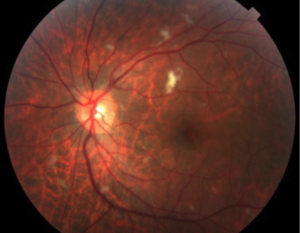You Don’t Have To Lose Your Vision From Radiation Retinopathy
 Through his extensive research, Dr. Finger has shown that not all radiation techniques for treating eye cancer are equal.
Through his extensive research, Dr. Finger has shown that not all radiation techniques for treating eye cancer are equal.
Though all radiation treatments kill cancer cells, there are significant dose-related differences in the severity and distribution of side effects depending on the technique. For example, as early as 1990, Dr. Finger’s research showed that compared to iodine-125 plaques, the lower energy photon radiation from palladium-103 seeds were less able to reach most normal ocular structures beyond the intraocular melanoma. Less radiation to the macular means less radiation maculopathy and better vision.
“This shows the importance of comparing radiation sources prior to each plaque surgery.”
At The New York Eye Cancer Center, careful comparative source selection has translated to improved local control and better long-term results. Overall, treatment processes developed based on Dr. Finger’s research have greatly increased patient outcomes. For instance, as Dr. Finger points out:
“In the 1980s, more than 50% of patients were legally blind within 5 years after plaque therapy for choroidal melanoma due to radiation side-effects. This is no longer the case. Due to the use of palladium-103 plaques and anti-VEGF therapy, most patients keep their vision.”









